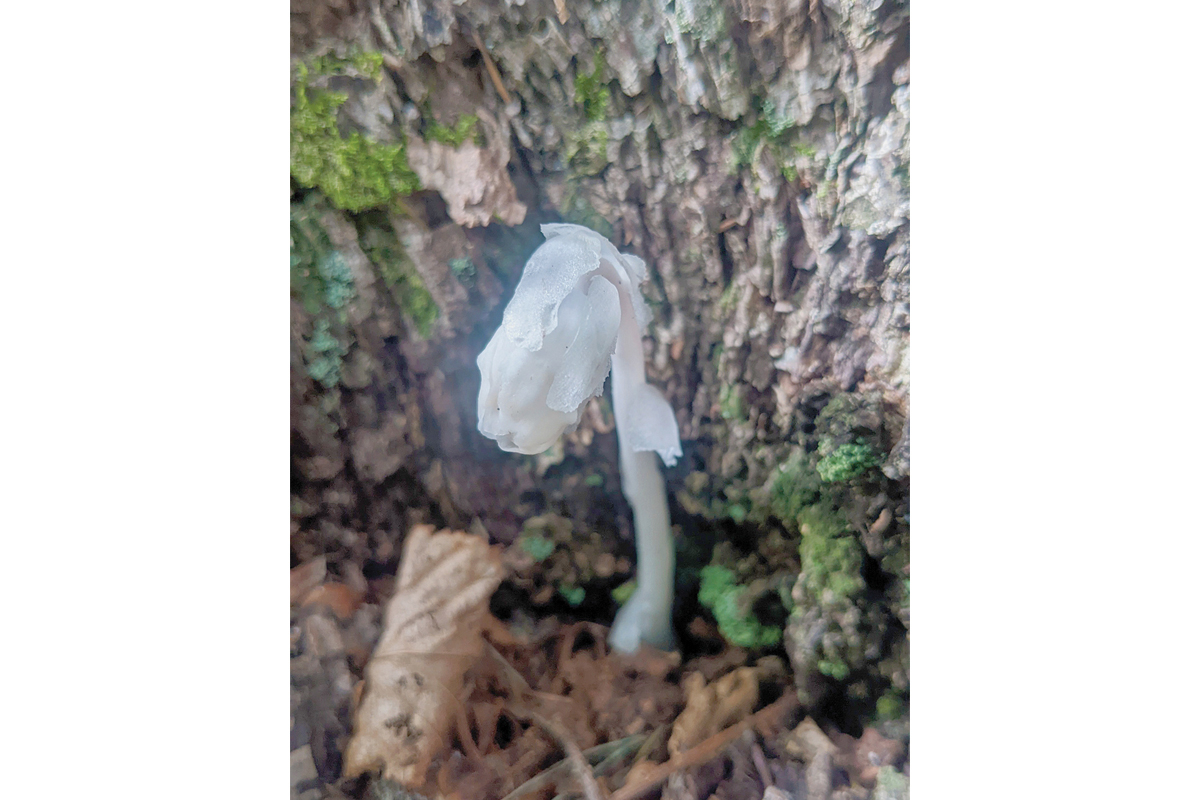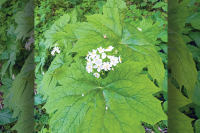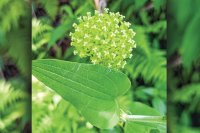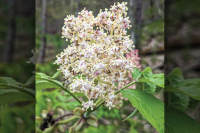Notes from a plant nerd: I see ghost flowers
 Because ghost pipes don’t perform photosynthesis, they rely on relationships with nearby fungi for food. Adam Bigelow photo
Because ghost pipes don’t perform photosynthesis, they rely on relationships with nearby fungi for food. Adam Bigelow photo
This time of year, as the wind rustles the leaves and the shadows begin to elongate as the sun lingers lower on the horizon, the veil between the worlds seems to grow thinner and thinner.
Spooks, haunts, haints and ghouls begin appearing in the shadows, on the edges of the forest and as costumes on store shelves or features on TV commercials.
There are also ghosts on the forest floor. So-called parasitic plants whose white, pink or purple colors hide their flowering nature and seedy antics. Appearing more like fungi, ghost pipes (Monotropa uniflora) hide in the duff and fool many a hiker into asking, “What kind of mushroom is this?” on forums and mushroom identification pages across social media. But they are not mushrooms.
Like plants wearing a Halloween costume pretending to be a fungus, the ghost-pipes, also known as Indian pipes, corpse plant or Indian ghost pipe, contain no chlorophyll and are therefore not green like most plants are. While dressing up in the costume modeled after indigenous Native American regalia and ceremonial dress is inappropriate and offensive, ghost pipes can pretend to be fungi with no repercussions. They are linked by their roots to fungi in the soil, which connect them to tree roots that supply food and nutrients to these dependent flowering plants.
Generally known as parasitic plants, ghost pipes are more accurately called myco-heterotrophs. The prefix “myco-” means fungal, “hetero-” means different, and the suffix “troph-“ means food. So, a myco-heterotroph is a plant that does not produce its own food through photosynthesis. Rather, it links its roots in an evolutionarily derived relationship with fungal mycorrhizae, the tiny white threads under the soil that often produce mushrooms above the ground. These mycorrhizae are connected to the roots of trees that the ghost-pipe grows under, often but not limited to beech trees (Fagus grandifolia). These trees share their products of photosynthesis — sugar and carbohydrates — with the fungi, who also then share this excess with the ghost-pipe to which they are connected.
This sharing of energy and nutrients is why I don’t like the term “parasite” when describing these types of plants. “Parasite” is filled with negative connotations and may cause people to consider them harmful or detrimental to the trees they are connected with, and this is not the case. In fact, there are way more mutualistic relationships in and under the forest than there are competitive, “nature tooth and claw” types of relationships. Our modern culture of humanity could learn a lot about how to get along by studying the interconnected, multi-species relationships that exist in nature.
Related Items
The scientific Latin name of ghost pipe, Monotropa uniflora, is useful in identifying this spooky plant. Uniflora translates to “one flower, ” as this plant has a single flower on each stalk. Monotropa translates to “one turn” and refers to how the flower of ghost-pipe nods downward while it is in bloom, in an attempt to attract low-flying and crawling insects for pollination. Once they have been pollinated, the solitary flower head then turns to face towards the sky. This helps raise the height of the ripe seed head to aid in spreading its seeds farther than if it remained nodding downward.
There are other related and similar plants that use this fungal energy transport system to obtain food and are therefore also not green in color. The closely related Appalachian pygmy pipes (Monotropsis odorata) are purple in color and emerge in the forest duff and leaf litter at this time of year, waiting to rise up and flower in late winter/early spring. And there is the pine-sap (Hypopitys lanuginosa), which are a deep pink and have multiple flower heads on a single stalk. Both of these species can be differentiated from ghost pipe by having more than one flower per stalk.
At this time of year, most of the ghost pipes have dispersed their seeds, and shortly afterwards turned black and mushy as they die back to the ground, going dormant for the winter season. You can still spot some of the plants on the forest floor, standing as gravestones for the flowers that were. Spooky plants for the spooky season, but there is no reason to fear the ghost pipes.
(Adam Bigelow lives in Cullowhee. He leads weekly wildflower walks most Fridays and offers consultations and private group tours through Bigelow’s Botanical Excursions. This email address is being protected from spambots. You need JavaScript enabled to view it..)













